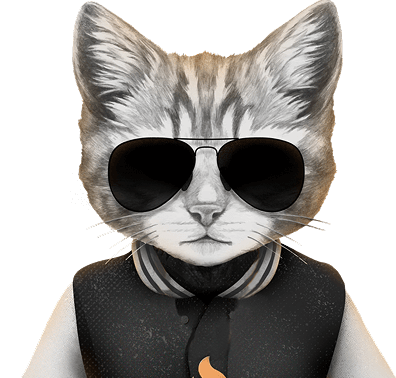
There’s a lot of talk about using AI in influencer marketing, but very little clarity about what kind of AI is actually being used or needed. Generative AI, predictive models, agentic AI, and machine learning each solve different problems, yet they often get lumped together in influencer tech. Meanwhile, we want to help marketers build a more well-rounded understanding of AI, including what each type can do. Hence, in this article, we broke down those differences clearly and help marketers understand which type of AI is actually powering their tools.
Not all AI is built to solve the problems marketers face. Some tools just automate tasks, while others offer strategic input - and knowing the difference matters. This article breaks down the main types of AI used in influencer marketing, from generative to predictive to agentic systems, and explains which ones are actually useful at different stages of a campaign.
Probably, the most useful invention for marketing aside from social media is artificial intelligence (AI). Its ability to bridge the gap between data science and implementation through analyzing big amounts of data has made it easier for marketers to enhance their strategies. This also affects how brands and agencies run influencer marketing. With AI, they can automate tasks and have an ‘additional brainstorming buddy’ on the team to give useful insights for campaigns.
AI in marketing isn’t something new, as it has been around since the 2010s. A McKinsey survey revealed that in 2023, 55% of businesses have adopted AI in some way. Given this, it’s no surprise that AI has become a part of our daily lives, whether as consumers or marketers.
What you may have not known is that AI comes in different types and functions that will impact your influencer marketing workflow. With 63% of influencer marketing professionals planning to use AI and Machine Learning (ML) in the coming years, understanding which type of AI suits your needs will help you make better decisions and choose the right tools for your strategy.
Key takeaways:
55% of businesses have adopted AI in 2023, meanwhile 63% of influencer marketers are planning to use AI and Machine Learning (ML) in the future.
We can classify AI into 3 categories: based on technology, functionalities, and capabilities.
Generative AI is the most commonly used type of AI in influencer marketing.
The most effective use depends on what you need: speed, scale, accuracy, or insight.
Mixing the right types of AI across the workflow delivers more value than relying on one model alone.
Types of Artificial Intelligence
There are three categories that can be used to classify AI. Dividing them into these categories helps make sense of how AI works and what it can do. This classification helps marketers to choose AI tools, set realistic expectations, and prevent spending on unnecessary tech that doesn’t fit your influencer marketing needs.
Based on Technology
AI is built using different methods, such as machine learning, symbolic AI, and neural networks. These methods affect AI capabilities and their potential for advancements in the future.
1. Symbolic AI (Rule-Based AI)
This is AI that follows programmed rules to solve problems. Symbolic AI uses logic and symbols to process information, but it struggles with tasks that need intuition or involve uncertainty. In influencer marketing, this AI could be used for rule-based influencer selection. For example, it can filter creators based on engagement rates or follower counts.
2. Connectionist AI (Neural Networks & Machine Learning AI)
Inspired by the human brain, Connectionist AI learns from data using artificial neutral networks so it can recognize patterns, adapt to new information, and improve itself. This AI type serves as the backbone of many modern AI developments which pushes improvement in natural language processing, image and speech recognition, and predictive analysis. Generative AI is also included in this type. Some examples of this type of AI include ChatGPT, Google’s RankBrain, and Instagram’s recommendation algorithm.
In influencer marketing, this AI helps brands analyze influencer performance, predict campaign success, and personalize content for different platforms & audiences.
3. Evolutionary AI (Genetic Algorithms & Optimization AI)
While the previous AI is inspired by the human brain, this one is inspired by biological evolution — hence the name. Evolutionary AI imitates natural selection to find the best solutions for complex problems through trial and error, which helps it improve over time. Existing AI that falls into this category includes stock market trading systems and autonomous robots, as they are able to optimize their performance.
In influencer marketing, evolutionary AI can be applied to automate A/B testing in influencer campaigns to further find the best strategy based on the previous engagement and conversion data.
Based on Functionality
Categorizing AI based on functionality focuses on what it can do in terms of behavior. Some of these AI types are already present in real life, while others remain theoretical concepts that researchers have yet to bring to life.
1. Reactive Machines
Reactive machines are the most basic type of AI. They respond to specific inputs and operate based on pre-set rules, but they cannot learn from past experiences. Because of this, reactive machines don’t have the ability to improve. A real-life example of this AI is Deep Blue, the chess AI that famously defeated world champion Garry Kasparov.
In influencer marketing, reactive machines could be used for automated responses in chatbots or rule-based influencer selection.
2. Limited Memory
Unlike reactive machines, AI with limited memory can learn from past data and historical information to improve its decision-making in future actions. As its name suggests, this AI retains only short-term memory, meaning it can adjust based on recent experiences but does not develop long-term intelligence.
This is the most commonly used AI in influencer marketing to help automate tasks like selecting influencers, predicting campaign performance, and trend forecasting.
3. Theory of Mind
Every AI that (still in theory) is capable of understanding human emotions, thoughts, and intentions falls into this category. This would allow it to interact like a human by recognizing feelings and responding with decent manners and contextual understanding. In short, this AI would be able to perform social functions like a real person.
Though Theory of Mind AI is still in development, researchers predict that future AI assistants may be the first to use this technology to engage in emotionally intelligent conversations.
If this AI becomes a reality, it would do more than just sentiment analysis; it would understand audience emotions and improve influencer strategies based on the existing sentiment and monitored social interactions.
4. Self-aware AI
If you’ve ever watched movies like Her or Avengers: Age of Ultron, then you’ve seen a fictional portrayal of self-aware AI. At this stage, AI would not only understand emotions but also experience them, form its own thoughts and desires, and make independent decisions.
If we take this AI to influencer marketing practice, this AI will most probably be the next version of AI influencer. Instead of being generated by AI and having their social media accounts managed by humans, self-aware AI will be fully autonomous. They will create content, interact with audiences like a real person, and more.
Based on Capabilities
Knowing AI types based on their capabilities measures how advanced each AI is. In this category, some AI is built for specific tasks, while others are designed to imitate human intelligence. Let’s break them down one by one and see how they can be used in influencer marketing:
1. Narrow AI (Weak AI)
Weak AI is a system designed to carry out specific tasks and cannot operate above its programmed abilities. In performing tasks, it follows set rules and learns from data, but it lacks independent reasoning or human-like understanding. This type of AI is already common in our daily lives, seen in tools like Siri, Google Assistant, chatbots, and recommendation algorithms on platforms like Netflix and YouTube.
In influencer marketing, this type of AI presents in a form of AI-powered tools that help analyze engagement rates, track influencer performance, and suggest what can be optimized in a campaign.
2. Strong AI (General AI)
Strong AI, also known as General AI can understand, learn, and apply its knowledge, just like humans. It is capable of solving complex problems through reasoning and is even self-aware. This type of AI is still hypothetical and doesn’t exist yet, but it is the goal of advanced AI research.
If this AI is successfully developed in the future, it is expected to operate by itself without human programming or operation. It could help marketers fully manage influencer campaigns, negotiate deals, and even adapt to changing trends without needing human intervention.
3. Superintelligent AI
Superintelligent is a type of AI that can surpass human intelligence in every aspect. Not only would it be self-aware, but it would also possess soft skills like creativity, problem-solving, decision-making, and emotional intelligence. This AI doesn’t exist yet, but it has been portrayed in movies such as HAL 9000 in 2001: A Space Odyssey and Skynet in Terminator.
In a future where this kind of AI exists, we can expect it to predict viral trends before they happen and optimize influencer strategies better than any human - and yet, this would be an easy task for it.
The Most Suitable AI Types for Influencer Marketing Needs
Now, with only a limited number of AI types available, which ones can best support influencer marketing needs?
Looking at today’s AI availability, all existing AI falls under Narrow AI in terms of capability. For influencer marketing, the most commonly used type based on technology is Connectionist AI. This is because it can process large datasets, identify patterns, and provide insights that improve influencer marketing efforts, including predictive analytics, performance monitoring, and sentiment analysis.
Meanwhile, based on functionality, Limited Memory AI is the most widely used in this industry due to its ability to learn from past data and historical information. This makes it useful for personalizing content, improving influencer selection, and detecting fraud.
Here’s the table of best AI tools that can assist you in any influencer marketing campaigns, depending on your specific goals:
| Purpose | AI Tool Examples |
|---|---|
| Influencer Discovery | HypeAuditor, Klear, Grin, Heepsy |
| Predictive Analytics | InfluencerDB, NeoReach, HypeAuditor |
| Fraud Detection | HypeAuditor, Emplifi, CreatorIQ |
| Sentiment Analysis | Brandwatch, HypeAuditor, Meltwater |
| Audience Segmentation | Influencity, HypeAuditor, BuzzSumo |
| Performance Tracking | HypeAuditor, Traackr, Tagger |
| Creative Content Generation | ChatGPT, Midjourney |
Brands That Use AI for Influencer Marketing
The most common AI used by marketers in influencer marketing is generative AI. According to Hubspot’s survey of more than 1,350 marketers in the US, most of them use generative AI, with 66% using chatbots. 57% using visual AI content creation, and 56% using text generation tools.
There have been many examples of successful influencer marketing campaigns that involve AI. For instance, Burger King’s Million Dollar Whopper campaign, launched on February 5, 2024. This campaign invited customers to create and submit their dream Whopper creations for a chance to win a $1 million prize. Participants could build their dream burger using an AI-powered website. To make this contest even bigger, Burger King collaborated with several food influencers.
 Another great example is Heinz’s A.I. Ketchup campaign from 2022 and 2023, which used image generators like DALL-E 2 to create unique visuals of ketchup bottles. Not only did Heinz generate the image themselves, but they also encouraged social media users to share their own AI-generated ketchup bottle designs. Heinz then sent the physical promotional bottles to influencers, who then posted about them on their profiles, making this campaign even more viral. Thanks to this campaign, Heinz’s social media engagement was reported to be 38% higher than previous campaigns, earning them over 1.15 billion impressions.
Another great example is Heinz’s A.I. Ketchup campaign from 2022 and 2023, which used image generators like DALL-E 2 to create unique visuals of ketchup bottles. Not only did Heinz generate the image themselves, but they also encouraged social media users to share their own AI-generated ketchup bottle designs. Heinz then sent the physical promotional bottles to influencers, who then posted about them on their profiles, making this campaign even more viral. Thanks to this campaign, Heinz’s social media engagement was reported to be 38% higher than previous campaigns, earning them over 1.15 billion impressions.
 What about brands’ experience with influencer marketing platforms? Let us give you an example from Atmos, a well-known streetwear and sneaker boutique from Japan that carries brands like Nike, Adidas, New Balance, Converse. Since 2023, they have been using HypeAuditor as an AI-powered platform to assist them in selecting influencers and monitoring social media conversations. As a result, Atmos’s marketing team reduced the time spent on influencer selection and authenticity checks while successfully improving their brand presence on social media.
What about brands’ experience with influencer marketing platforms? Let us give you an example from Atmos, a well-known streetwear and sneaker boutique from Japan that carries brands like Nike, Adidas, New Balance, Converse. Since 2023, they have been using HypeAuditor as an AI-powered platform to assist them in selecting influencers and monitoring social media conversations. As a result, Atmos’s marketing team reduced the time spent on influencer selection and authenticity checks while successfully improving their brand presence on social media.
What This Means for Marketers
AI has become a valuable tool in influencer marketing, helping brands with everything from picking the right influencers to tracking performance and spotting fraud. But not all AI works the same way, which is why understanding its different types matters. Knowing what each AI can (and can’t) do helps marketers choose the right tools instead of wasting time and money on technology that doesn’t align with their influencer marketing strategy
Right now, most AI used in marketing falls under Narrow AI, handling tasks like predictive analytics and automated influencer selection. As technology develops, we might see more advanced AI that can take on even bigger roles. The important thing is knowing which AI tools actually help and which ones aren’t worth the hype.
Think of these as your checklist going forward:
Start by listing what’s slowing you down. Match each task with the kind of AI that could help.
AI only works well if your past campaign data is clean. Fix your spreadsheets and tracking first.
Try one AI feature in one campaign. Track how much time it saves and how accurate it is. If it works, use it more.
For things like tone, legal terms, or final numbers, make sure someone always reviews the AI’s work.
Don’t mix AI types without a plan. Using different models across a campaign sounds smart, but if each tool pulls from different logic or data sources, it can create reporting chaos. Define what each AI handles and what your team owns.













